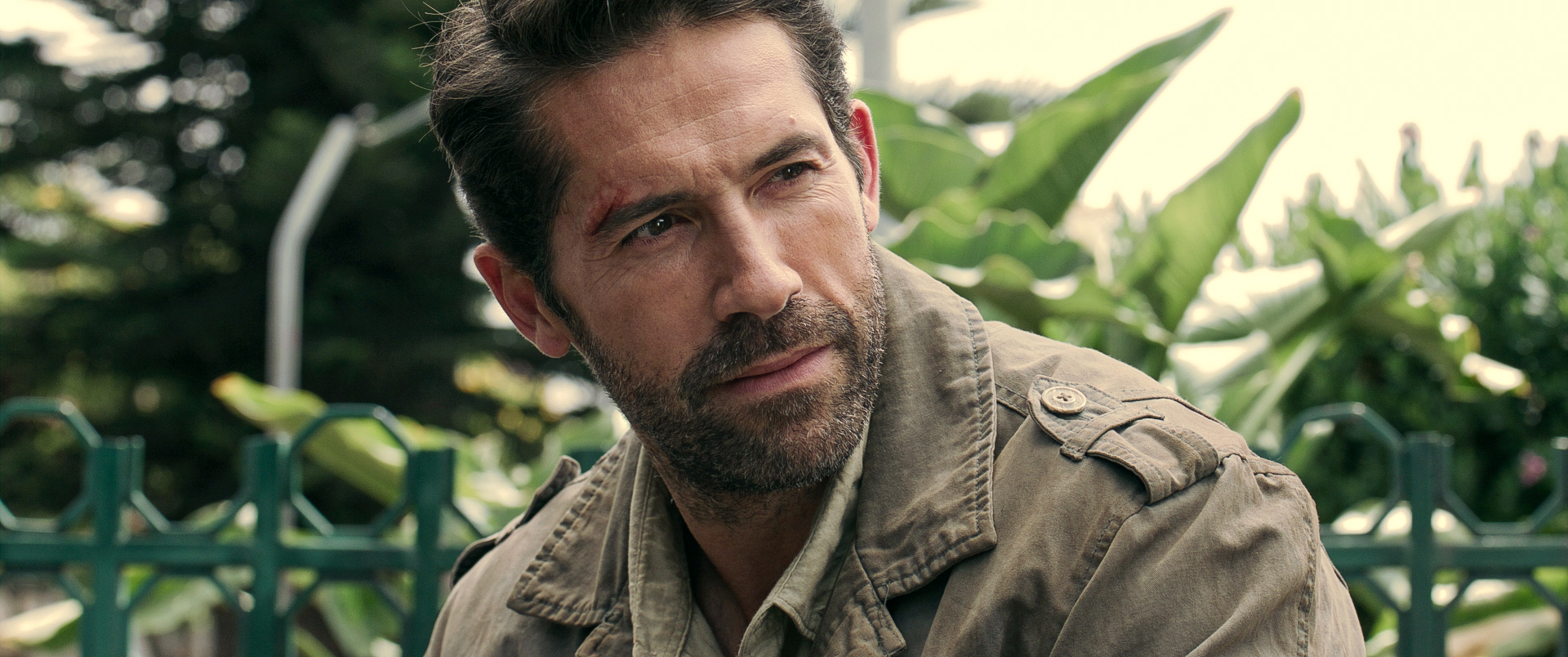Diablo Star Scott Adkins on Marko Zaror, Script, and Fight Sequences

Scott Adkins Discusses Collaboration with Marko Zaror and Director Ernesto Diaz Espinoza on Lionsgate's "Diablo"
Action star Scott Adkins recently spoke about his experience co-creating and starring in Lionsgate's action thriller, "Diablo," alongside Marko Zaror and under the direction of Ernesto Diaz Espinoza. The film, currently available in theaters, digital, and on demand, marks a significant collaborative effort for Adkins, known for his roles in major franchises like "John Wick" and "The Expendables."
"Diablo": A Passion Project Born from Collaboration
"Diablo" tells the story of Kris Chaney (Adkins), an ex-convict who embarks on a dangerous mission to protect Elisa (Alanna De La Rossa), the daughter of a Colombian gangster. When the gangster hires the ruthless killer El Corvo (Zaror) to exact revenge, Kris must use all his skills to survive and keep his promise to the girl's mother.
The genesis of "Diablo" stemmed from Adkins' and Zaror's shared experience working on "John Wick: Chapter 4." "We were discussing how we could star in a movie together," Adkins explained. The duo then enlisted Ernesto Diaz Espinoza, a director Zaror frequently collaborates with in Chile, and writer Mat Sansom to develop the story into a full-fledged script. The film was ultimately produced in Colombia.
Director's Vision and On-Set Dynamics
Adkins praised Espinoza's directorial style and expertise. "To have worked with him now, it was such a rewarding experience and one of the most comfortable relationships I've ever had with a director," Adkins said. "He knows exactly what he wants…He's a cinephile, knows everything about movies, and it was a pleasure." He also highlighted the contributions of cinematographer Niccolo De La Fere, an ex-kickboxer whose experience proved invaluable in capturing the action sequences.
The Challenges of Fight Choreography and Zaror's Athleticism
Adkins emphasized the difficulty of keeping up with Marko Zaror during the film's intense fight choreography. "Keeping up with Marko Zaror is what's difficult, because the guy's incredible," Adkins stated. "He's the purest athlete I've ever worked with. The guy's a phenomenal martial artist on screen and off, such an amazing athlete!" Adkins jokingly added that he used his greater number of fights as an excuse for struggling to keep pace with Zaror's athleticism.
Alanna De La Rossa's Impactful Performance
Adkins also lauded Alanna De La Rossa's performance as Elisa, calling her "absolutely phenomenal." He noted that her casting was initially a concern, but she exceeded all expectations. "She really is the heart of the movie," Adkins explained. "We ended up with probably the best actress we could have ever wished to have got."
Contextualizing "Diablo" within the Action Genre
The action genre has seen a resurgence in recent years, with films like the "John Wick" franchise and "The Raid" pushing the boundaries of fight choreography and visual storytelling. "Diablo" appears to be positioned to contribute to this trend, offering a blend of intense action and character-driven narrative. Dr. Emily Carter, a film studies professor at the University of Southern California, notes that, "The success of action films today hinges on the ability to deliver visceral thrills while grounding the violence in compelling character arcs. 'Diablo,' with its focus on Adkins' character's motivations and his relationship with the young girl, seems to be aiming for that balance."
The Evolution of Action Cinema
From the classic martial arts films of Bruce Lee and Jackie Chan to the modern, gritty action of "Diablo," the genre has constantly evolved. Experts like film critic and historian Leonard Maltin point out that, "The integration of martial arts expertise with compelling storytelling is a hallmark of successful action films. Adkins' background in martial arts, coupled with Zaror's athletic prowess, suggests that 'Diablo' will deliver a high level of action authenticity."
The film's availability in theaters, digital platforms, and on demand reflects the changing landscape of film distribution, allowing audiences to access content in a variety of ways.
Originally sourced from: Movie
